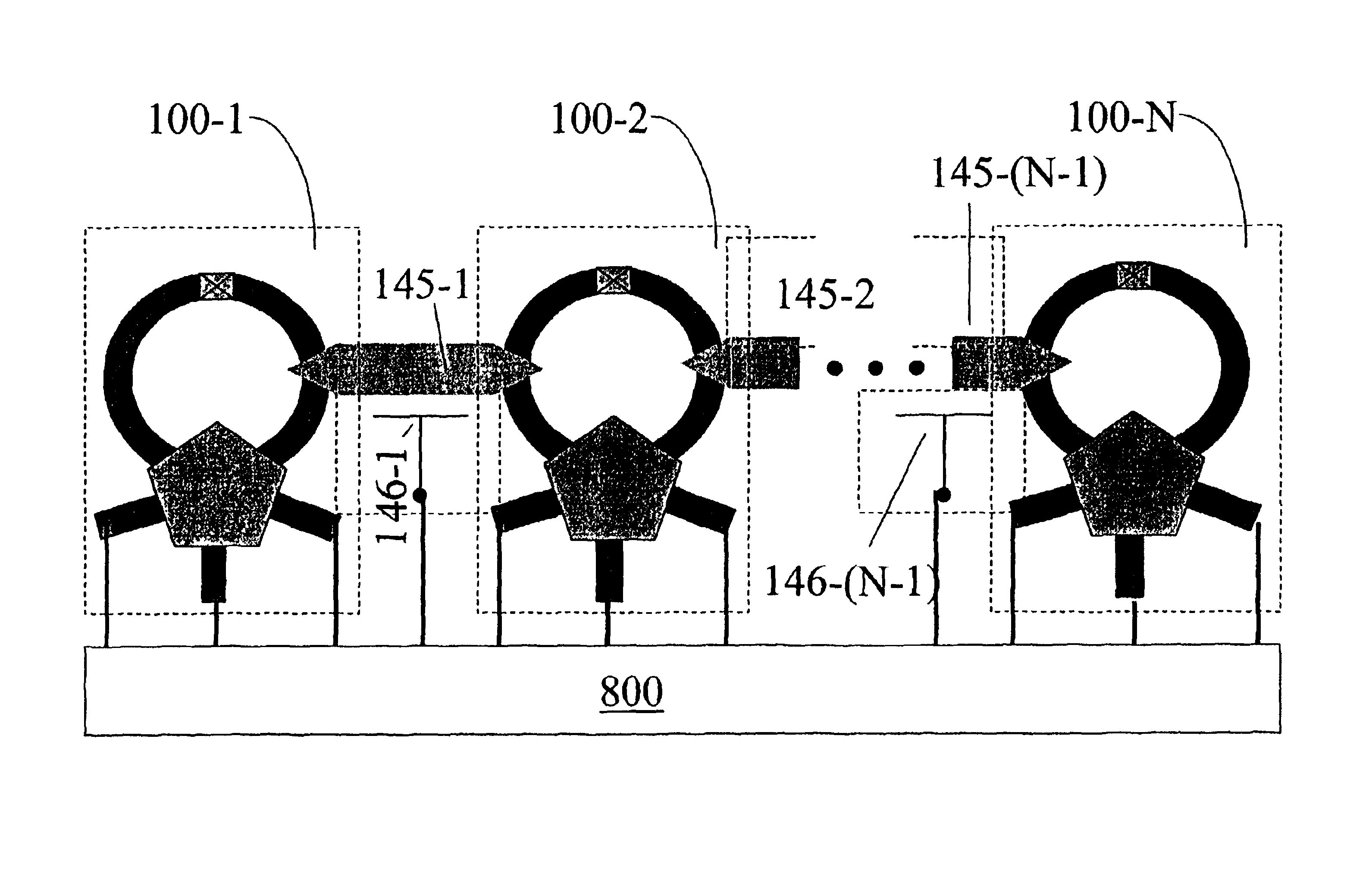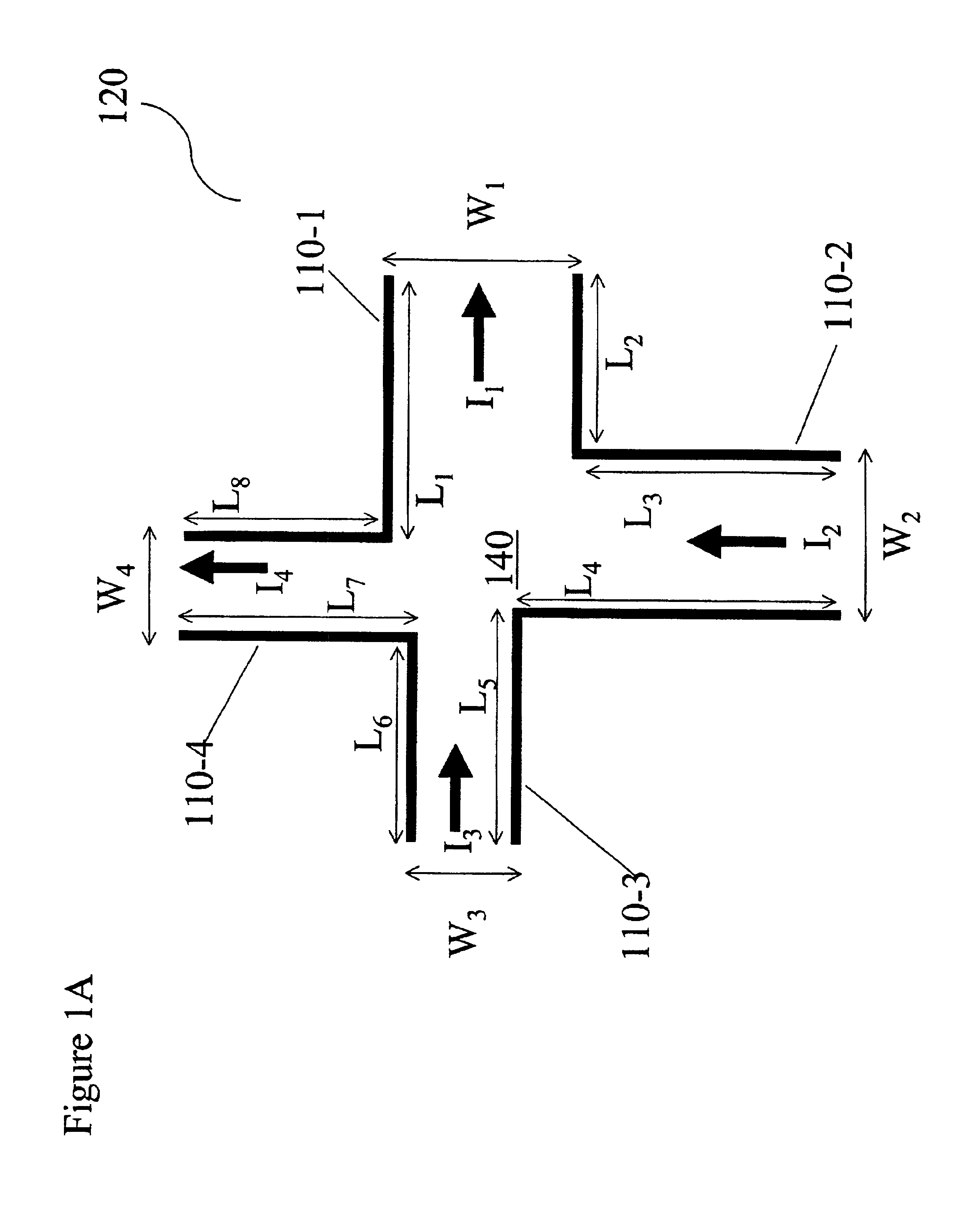Quantum bit with a multi-terminal junction and loop with a phase shift
a phase shift, multi-terminal junction technology, applied in the field of quantum computing, can solve the problems of long-range electric interaction, difficult expansion of such systems to a commercially useful number of qubits, and the basis state used is not naturally degenera
- Summary
- Abstract
- Description
- Claims
- Application Information
AI Technical Summary
Benefits of technology
Problems solved by technology
Method used
Image
Examples
Embodiment Construction
[0050]In accordance with embodiments of the invention, a quantum computing operation can be performed on an array of quantum qubits where at least one of the qubits includes a qubit according to the present invention. A qubit according to the present invention includes a multi-terminal junction where two terminals of the multi-terminal junction are joined to form a superconducting loop. The superconducting loop introduces a phase shift to the superconducting order parameter. In some embodiments, the superconducting loop includes an intrinsic phase shifter.
[0051]Intrinsic phase shifters in superconducting phase quantum bits (qubits) are disclosed in M. H. S. Amin, T. Duty, A. Omelyanchouk, G. Rose and A. Zagoskin, U.S. Provisional Application Ser. No. 60 / 257624, “Intrinsic Phase Shifter as an Element of a Superconducting Phase Quantum Bit”, filed Dec. 22, 2000, herein incorporated by reference in its entirety. A phase shifting structure with 0 and π-phase shifts in a two-terminal DC ...
PUM
 Login to View More
Login to View More Abstract
Description
Claims
Application Information
 Login to View More
Login to View More - R&D
- Intellectual Property
- Life Sciences
- Materials
- Tech Scout
- Unparalleled Data Quality
- Higher Quality Content
- 60% Fewer Hallucinations
Browse by: Latest US Patents, China's latest patents, Technical Efficacy Thesaurus, Application Domain, Technology Topic, Popular Technical Reports.
© 2025 PatSnap. All rights reserved.Legal|Privacy policy|Modern Slavery Act Transparency Statement|Sitemap|About US| Contact US: help@patsnap.com



